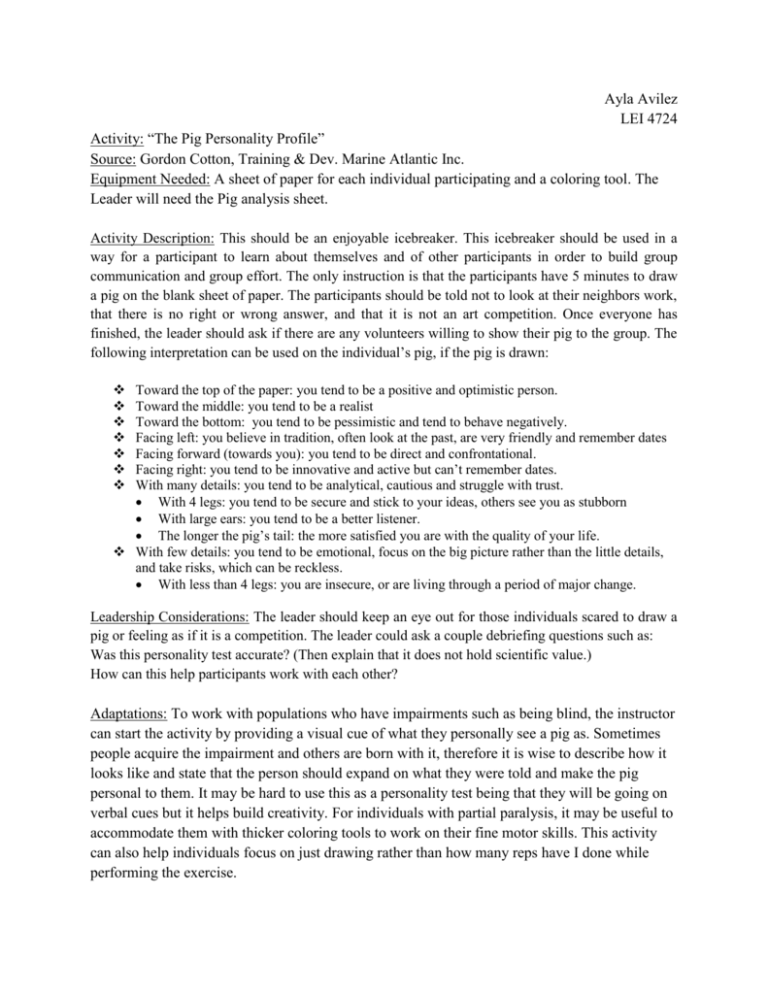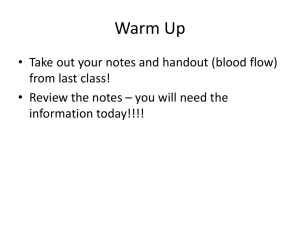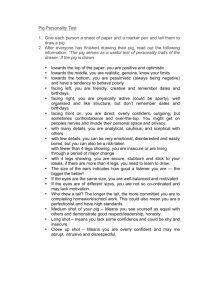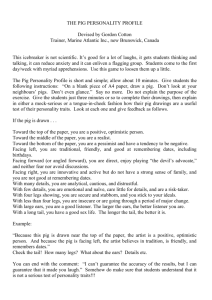File
advertisement

Ayla Avilez LEI 4724 Activity: “The Pig Personality Profile” Source: Gordon Cotton, Training & Dev. Marine Atlantic Inc. Equipment Needed: A sheet of paper for each individual participating and a coloring tool. The Leader will need the Pig analysis sheet. Activity Description: This should be an enjoyable icebreaker. This icebreaker should be used in a way for a participant to learn about themselves and of other participants in order to build group communication and group effort. The only instruction is that the participants have 5 minutes to draw a pig on the blank sheet of paper. The participants should be told not to look at their neighbors work, that there is no right or wrong answer, and that it is not an art competition. Once everyone has finished, the leader should ask if there are any volunteers willing to show their pig to the group. The following interpretation can be used on the individual’s pig, if the pig is drawn: Toward the top of the paper: you tend to be a positive and optimistic person. Toward the middle: you tend to be a realist Toward the bottom: you tend to be pessimistic and tend to behave negatively. Facing left: you believe in tradition, often look at the past, are very friendly and remember dates Facing forward (towards you): you tend to be direct and confrontational. Facing right: you tend to be innovative and active but can’t remember dates. With many details: you tend to be analytical, cautious and struggle with trust. With 4 legs: you tend to be secure and stick to your ideas, others see you as stubborn With large ears: you tend to be a better listener. The longer the pig’s tail: the more satisfied you are with the quality of your life. With few details: you tend to be emotional, focus on the big picture rather than the little details, and take risks, which can be reckless. With less than 4 legs: you are insecure, or are living through a period of major change. Leadership Considerations: The leader should keep an eye out for those individuals scared to draw a pig or feeling as if it is a competition. The leader could ask a couple debriefing questions such as: Was this personality test accurate? (Then explain that it does not hold scientific value.) How can this help participants work with each other? Adaptations: To work with populations who have impairments such as being blind, the instructor can start the activity by providing a visual cue of what they personally see a pig as. Sometimes people acquire the impairment and others are born with it, therefore it is wise to describe how it looks like and state that the person should expand on what they were told and make the pig personal to them. It may be hard to use this as a personality test being that they will be going on verbal cues but it helps build creativity. For individuals with partial paralysis, it may be useful to accommodate them with thicker coloring tools to work on their fine motor skills. This activity can also help individuals focus on just drawing rather than how many reps have I done while performing the exercise.





